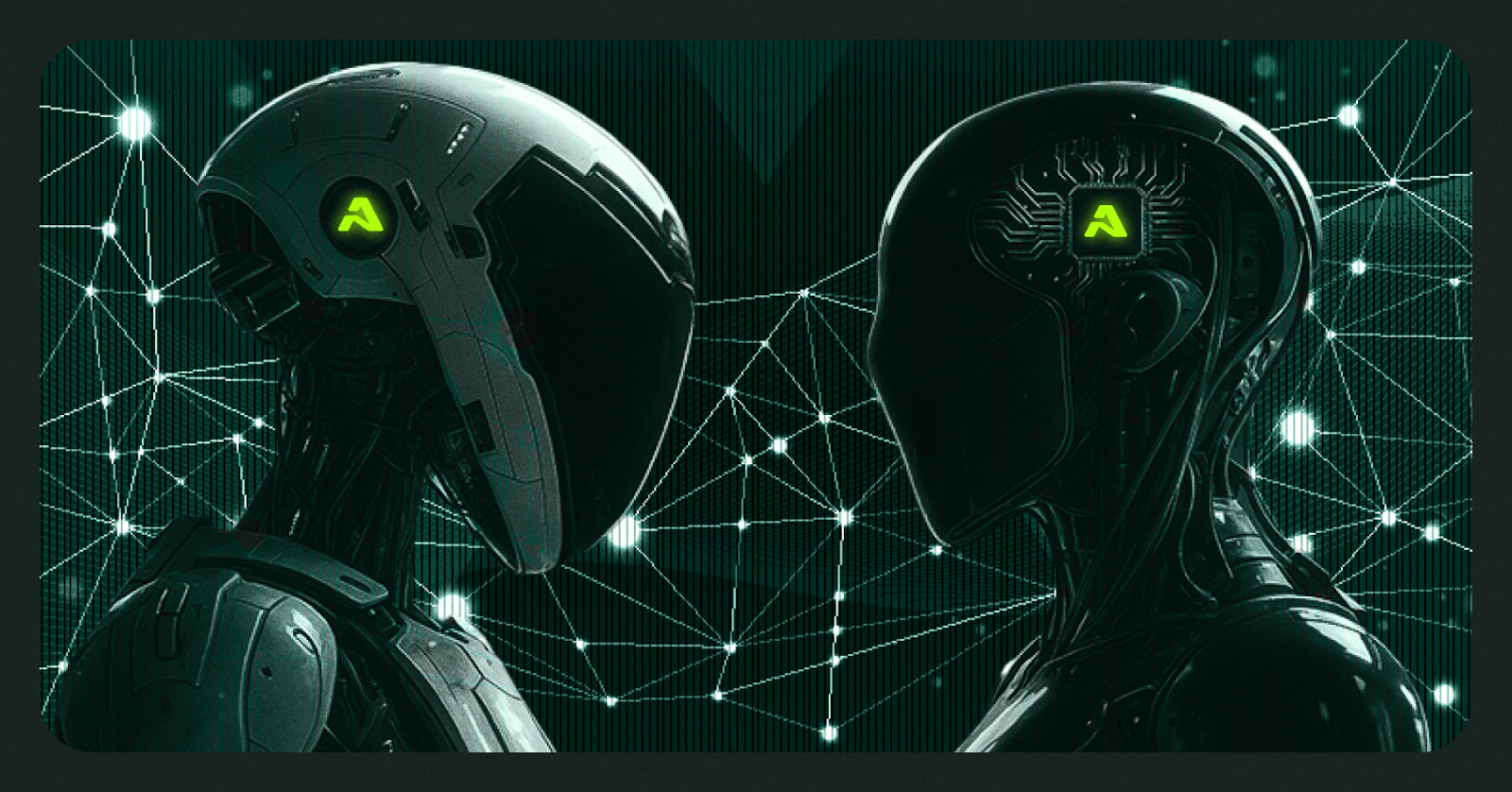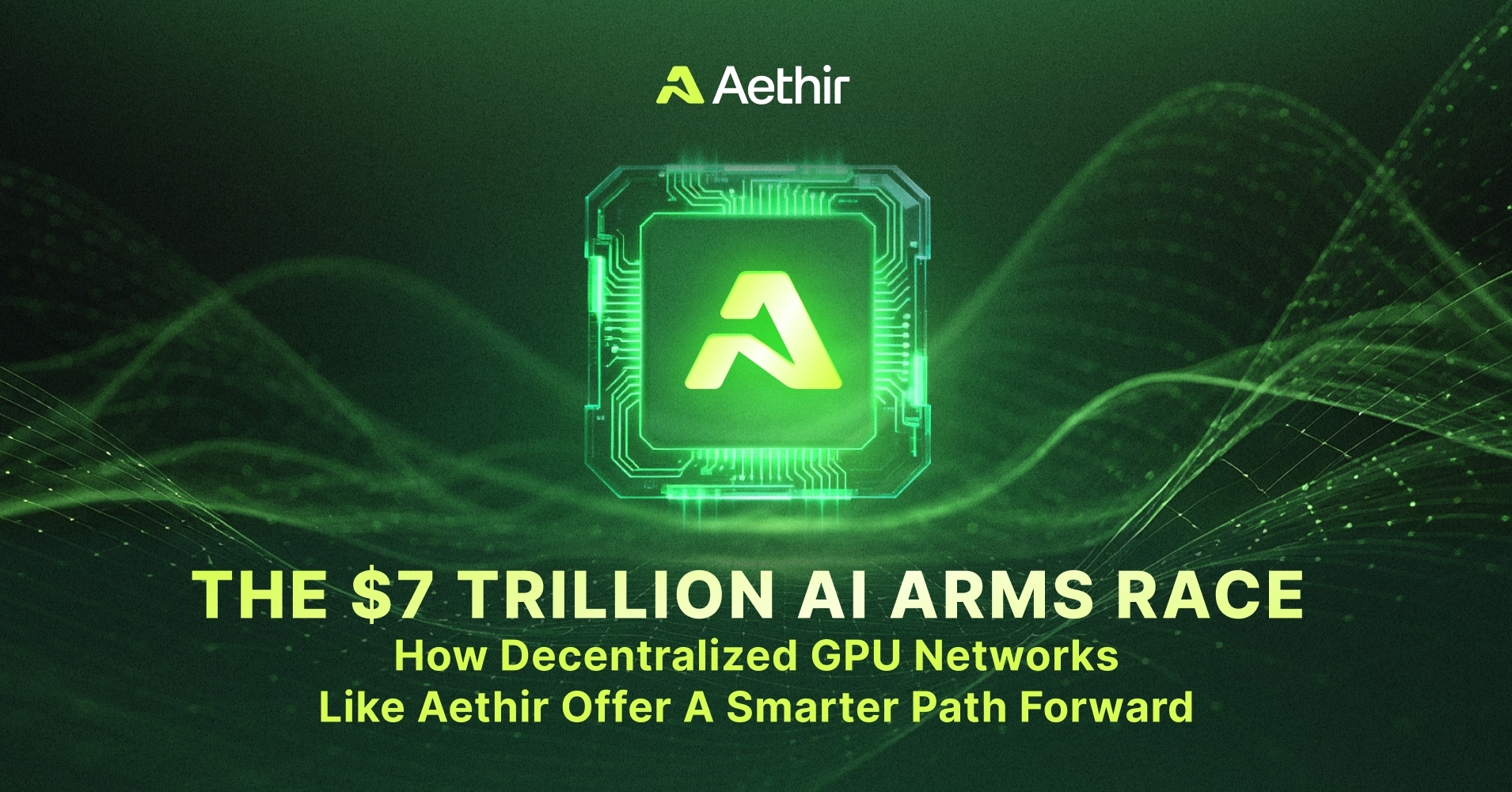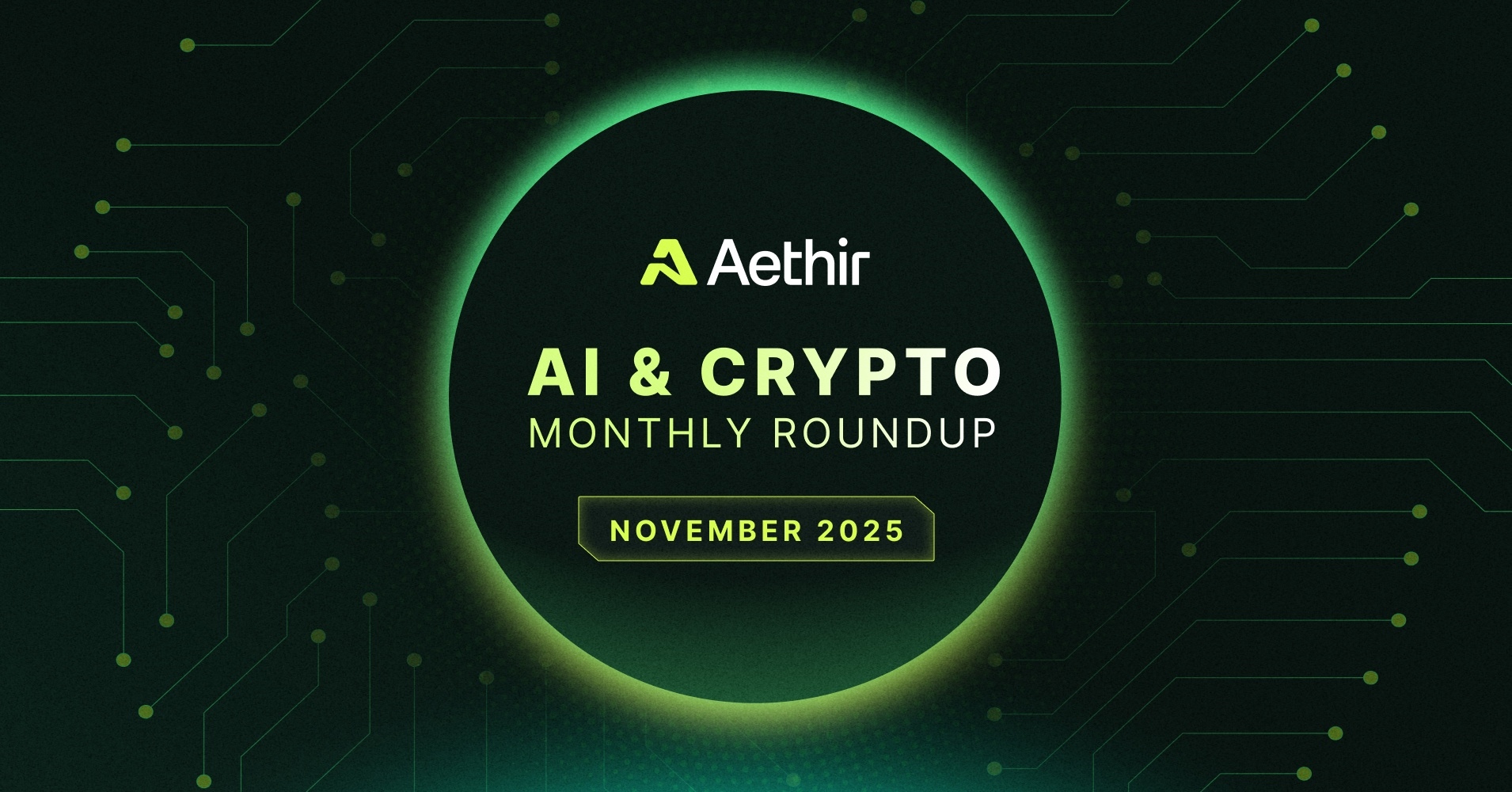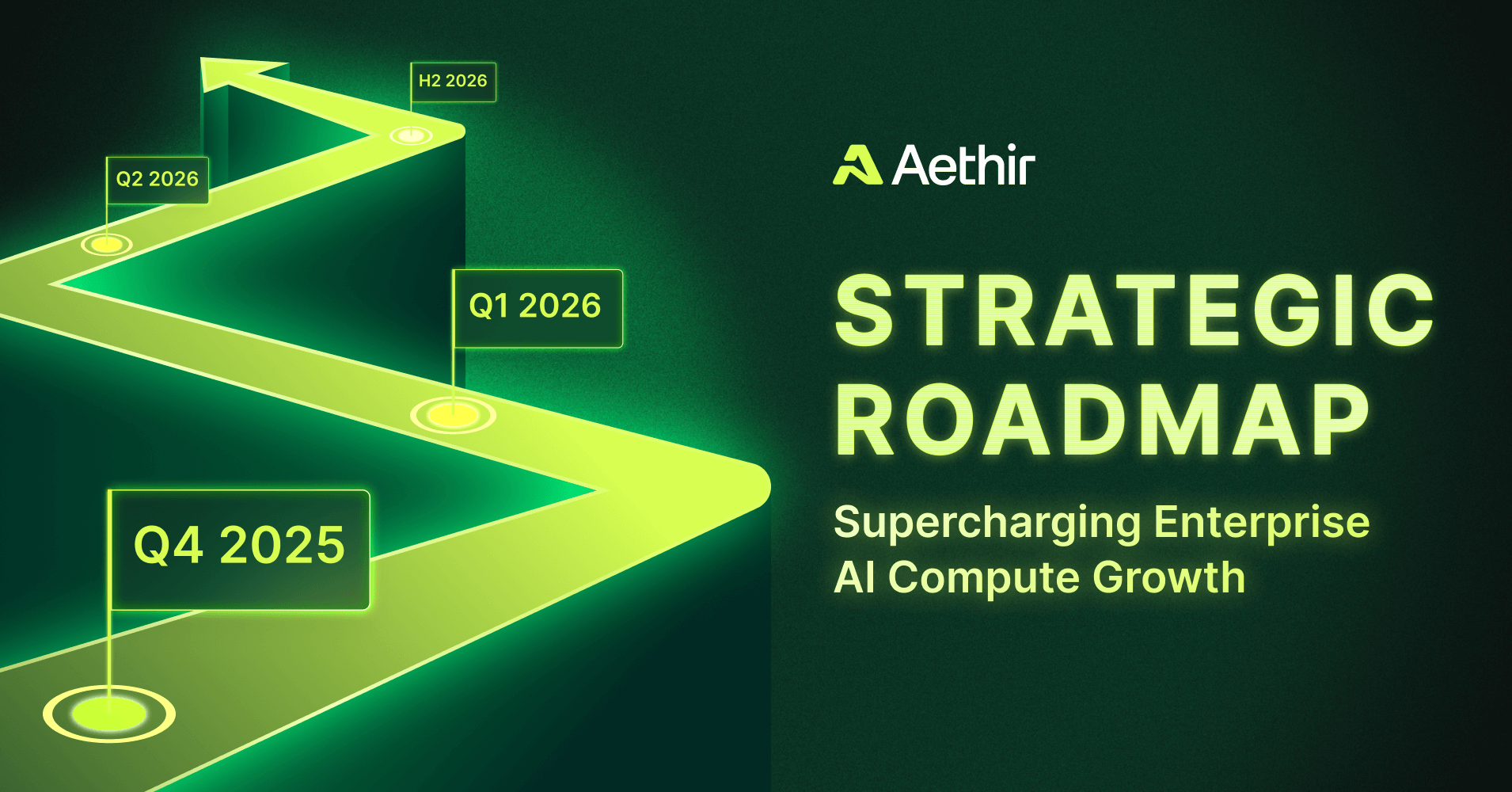Физический ИИ реален, неизбежен, и только децентрализованная инфраструктура способна обеспечить его масштабирование. Революция DePAI ведёт этот сдвиг, заменяя хрупких и рентно-ориентированных традиционных облачных провайдеров открытыми, модульными и децентрализованными сетями физического ИИ — открывая новую эру для робототехники и автономных систем.
Ключевые выводы:
• К 2030 году более половины всех роботов на базе ИИ будут запускать рабочие нагрузки на децентрализованных GPU-сетях, а не на AWS, Azure или Google Cloud — полное переворачивание текущей парадигмы и рынок на $100 млрд.
• Всемирный экономический форум прогнозирует, что рынок децентрализованных физических инфраструктурных сетей (DePIN) вырастет с $20 млрд сегодня до $3,5 трлн к 2028 году — ошеломляющий рост на 6000%.
• Аналитики Morgan Stanley прогнозируют, что индустрия гуманоидной робототехники может приносить до $4,7 трлн годовой выручки к 2050 году, при этом в том же году будет продано более миллиарда единиц.
• Генеральный директор NVIDIA Дженсен Хуанг назвал робототехнику крупнейшей возможностью роста компании после ИИ, представляя себе «миллиарды роботов, сотни миллионов автономных транспортных средств и сотни тысяч роботизированных фабрик».
• Экосистема DePAI работает на базе ведущих проектов, включая Aethir, XMAQUINA, IoTeX, GEODNET, peaq и elizaOS, а альянс AI Unbundled обеспечивает стандарты и операционный потенциал, необходимые для реализации этого видения.
• Централизованные облачные вычисления в принципе не способны удовлетворить потребности Физического ИИ в обработке в реальном времени, низкой задержке и устойчивости — именно это стало катализатором инфраструктурной трансформации.
Катализатор этого сдвига прост: централизованные облачные вычисления не способны удовлетворить потребности Физического ИИ — систем искусственного интеллекта, которые воспринимают, понимают и взаимодействуют с реальным миром. От автономных транспортных средств, принимающих решения за доли секунды, до хирургических роботов, требующих субмиллисекундной точности, приложения Физического ИИ нуждаются в инфраструктурных возможностях, которые централизованные системы в принципе не могут предоставить.

Схождение этих трендов сигнализирует о наиболее значимой инфраструктурной трансформации со времён появления интернета.
Катализатор этого сдвига прост: централизованные облачные вычисления не способны удовлетворить потребности Физического ИИ — систем искусственного интеллекта, которые воспринимают, понимают и взаимодействуют с реальным миром. От автономных транспортных средств, принимающих решения за доли секунды, до хирургических роботов, требующих субмиллисекундной точности, приложения Физического ИИ нуждаются в инфраструктурных возможностях, которые централизованные системы в принципе не могут предоставить.
Кризис централизованного облака
Ограничения централизованной облачной инфраструктуры достигли критической точки. Глобальная нехватка GPU вызвала кризис поставок, сделав развитие передового ИИ чрезмерно дорогим для большинства организаций. Чипы NVIDIA H100, необходимые для обучения ИИ, стоят более $40 000 за единицу и остаются в крайне дефицитном положении. Крупнейшие облачные провайдеры изо всех сил пытаются удовлетворить спрос, некоторые клиенты ждут премиум-доступа к GPU месяцами.
Экономика ситуации не менее проблемна. Основные облачные провайдеры устанавливают завышенные тарифы на дефицитные GPU-ресурсы, а многие клиенты вынуждены ждать месяцами ради доступа. Для организаций, которым необходима непрерывная обработка ИИ, такие затраты быстро становятся неприемлемыми. Один автономный автомобиль, обрабатывающий 4 ТБ сенсорных данных ежедневно, столкнулся бы с астрономическими счетами за облачные вычисления, делающими массовое внедрение экономически невозможным.
Задержка представляет собой ещё более фундаментальную проблему. Приложения Физического ИИ требуют обработки в реальном времени с откликом, измеряемым в миллисекундах. Решения о экстренном торможении в автономных транспортных средствах должны приниматься за 1–5 мс, чтобы избежать аварий. Хирургические роботизированные системы нуждаются в субмиллисекундной тактильной обратной связи, чтобы хирурги могли чувствовать сопротивление тканей. Эти требования физически несовместимы с централизованными облачными системами, где данные должны преодолевать сотни или тысячи километров до центров обработки.
Проблемы с надёжностью усугубляют ситуацию. Только AWS в 2023 году испытал 27 серьёзных сбоев, каждый из которых нарушил работу тысяч приложений. Для систем Физического ИИ, управляющих инфраструктурой реального мира, такие сбои — не просто неудобство, а потенциально катастрофа. Централизованный сбой может одновременно отключить автономные автомобили, производственных роботов и медицинские устройства на целых территориях.
Революция DePAI
Децентрализованная инфраструктура Физического ИИ (DePAI) устраняет эти фундаментальные ограничения с помощью распределённых вычислительных сетей, которые приближают мощности обработки туда, где они нужны. Вместо того чтобы полагаться на несколько гигантских дата-центров, сети DePAI агрегируют вычислительные ресурсы тысяч независимых участников по всему миру, создавая устойчивую, низколатентную инфраструктуру, оптимизированную для приложений Физического ИИ.

Aethir воплощает эту трансформацию как оператор крупнейшего в мире децентрализованного облака GPU. С более чем 435 000 GPU корпоративного уровня, распределённых по 200+ локациям в 93 странах, Aethir предоставляет вычислительные мощности на сумму более $400 млн при исключительном аптайме в 98,92%. Эта распределённая архитектура устраняет единые точки отказа, от которых страдают централизованные системы, одновременно обеспечивая географическую близость, что значительно снижает задержку. Такие проекты, как Gensyn и Holoworld AI, уже используют децентрализованное облако GPU от Aethir для поддержки машинного интеллекта и агентных рабочих процессов в реальном времени, демонстрируя, как децентрализованная инфраструктура обеспечивает масштаб, низкую задержку и гибкость, необходимые для продвинутой робототехники и приложений ИИ.
Альянс AI Unbundled, возглавляемый IoTeX и GEODNET, обеспечивает стандарты, операционный потенциал и координацию, необходимые для реализации видения DePAI. IoTeX выступает как блокчейн-платформа, строящая открытую экосистему физического интеллекта, превращая данные из сетей физических машин в коллективный интеллект, где машины и ИИ-агенты могут взаимодействовать на основе проверенных данных в реальном времени. Платформа верифицирует и координирует действия машин через децентрализованные данные, инфраструктуру машинной идентичности, доказательства данных в реальном времени и доверенные мосты между устройствами, LLM-моделями и блокчейнами.
GEODNET управляет крупнейшей в мире децентрализованной ончейн-сетью прецизионного позиционирования, которая насчитывает более 19 500 базовых станций и предоставляет данные о местоположении с сантиметровой точностью по всему миру. Эта сеть снабжает роботов и автономные транспортные средства достоверными и защищёнными от подделки геоданными, необходимыми для точной навигации, роевого взаимодействия, безопасности и координации — всего того, что критически важно для умных машин в реальном мире.
XMAQUINA продвигает видение DePAI через свой DAO, предоставляя глобальному сообществу ликвидный доступ к ведущим частным робототехническим компаниям, создающим новое поколение гуманоидов. Объединяя ресурсы, DAO демократизирует инвестиции в робототехнику и автоматизацию, гарантируя, что рост умных машин будет формироваться через со-владение, со-создание и со-управление. Эта модель обеспечивает ранний доступ к компаниям Физического ИИ с высоким потенциалом, одновременно бросая вызов традиционным техногигантам и гарантируя, что ни одна отдельная корпорация не будет контролировать рабочую силу роботов будущего.
peaq функционирует как вычислительная платформа и операционная система Машинной экономики, позволяя устройствам — от сенсоров до роботов — взаимодействовать через само sovereign-IDs, совершать транзакции и предоставлять данные и сервисы через децентрализованные маркетплейсы. Как блокчейн уровня 1, peaq предоставляет проектам DePAI ключевые инструменты, включая само sovereign-идентичность и платёжные рельсы, многоуровневые системы верификации данных и Universal Machine Time. Платформа позволяет машинам автономно осуществлять транзакции и предоставлять услуги, обеспечивает уровень смарт-контрактов для DePAI, DePIN и DAO, а также позволяет краудсорсинг обучающих данных через DePIN — питая Машинную экономику на всех уровнях стека.
elizaOS соединяет революцию агентов и робототехнику, превращая децентрализованный интеллект в рабочие процессы реального мира. Уже обеспечивая работу ИИ-агентов в DeFi, командах и администрировании, система естественным образом расширяется на робототехнику, где необходимо локальное управление данными, координация задач и автономные действия без зависимости от хрупких централизованных облаков. elizaOS наделяет устройства суверенитетом и агентностью, позволяя им адаптироваться к нуждам пользователей. Плагины расширяют эту мощь в физические применения — например, плагин IoTeX соединяет агентов с DePIN-сетями, такими как метеостанции, GNSS-массивы и трекеры движения для безопасного восприятия и действий в реальном времени. В версии elizaOS v2 слой общей памяти связывает физических и цифровых агентов, а децентрализованная инфраструктура и TEE обеспечивают устойчивость. Вводя модульных, управляемых плагинами агентов в физическое пространство, elizaOS помогает раскрыть «последнюю милю» DePAI: сделать машины не просто умными, а агентными, коллаборативными и разрешёнными к использованию без ограничений. Это видение поддерживается давним партнёрством с Aethir, чьё децентрализованное облако GPU обеспечивает масштабируемые, низколатентные вычисления для экосистемы elizaOS.
Экономические преимущества впечатляют. Сети DePAI устраняют наценку централизованных облачных провайдеров, позволяя прямые P2P-транзакции между пользователями ИИ и поставщиками инфраструктуры. Токенизированные стимулы создают рыночное ценообразование, отражающее реальное соотношение спроса и предложения, а не корпоративные стратегии. При росте спроса вознаграждения увеличиваются, привлекая больше инфраструктуры. Когда предложение превышает спрос, цены падают, что даёт пользователям экономию.
Технические преимущества выходят за рамки экономики. Географическое распределение естественным образом возникает из глобального участия в токенизированных сетях, приближая вычислительные мощности к устройствам Физического ИИ. Узлы на периферии могут разворачиваться в тех же городах, зданиях или даже комнатах, где работают системы, практически устраняя сетевую задержку. Распределённая архитектура обеспечивает резервирование, гарантирующее непрерывность работы даже при сбое отдельных узлов.
Реальная трансформация
Влияние инфраструктуры DePAI выходит далеко за рамки технических возможностей и фундаментально меняет то, как мы живём и работаем. Видение Дженсена Хуанга о многотриллионной возможности в робототехнике становится реальностью: NVIDIA работает над созданием «миллиардов роботов, сотен миллионов автономных транспортных средств и сотен тысяч роботизированных фабрик», которые будут работать на децентрализованной инфраструктуре, делающей массовое внедрение экономически целесообразным.

В уходе за пожилыми людьми гуманоидные роботы, работающие на сетях DePAI, смогут обеспечивать круглосуточный мониторинг и помощь, позволяя пожилым поколениям сохранять независимость и снижая нагрузку на системы здравоохранения. Эти ИИ-компаньоны способны выявлять медицинские чрезвычайные ситуации, помогать в повседневных делах и обеспечивать социальное взаимодействие — при этом обрабатывая чувствительные медицинские данные локально через децентрализованную инфраструктуру, которая сохраняет приватность и гарантирует надёжность.
Трансформация логистики не менее глубока. Автономные транспортные средства требуют обработки в реальном времени огромных потоков сенсорных данных. Система Tesla Full Self-Driving выполняет более 36 трлн операций в секунду, обрабатывая терабайты данных для принятия навигационных решений за доли секунды. Сети DePAI обеспечивают эту вычислительную мощность локально, устраняя задержки, из-за которых централизованное облако принципиально непригодно для функций, критически важных для безопасности.
Производство также переживает стремительное внедрение коллаборативных роботов, которые должны безопасно работать рядом с людьми. Эти системы требуют обработки в реальном времени визуальных, тактильных и средовых данных при координации с другими машинами. Инфраструктура DePAI открывает доступ к продвинутым возможностям ИИ для контроля качества, предиктивного обслуживания и гибких производственных систем, которые могут адаптироваться к изменяющимся требованиям без участия человека.

Рыночные перспективы колоссальны. Глобальный рынок GPU для дата-центров вырастет со $120 млрд в 2025 году до $228 млрд к 2030 году, а рынок GPU-as-a-service взлетит с $8,8 млрд до $26,6 млрд за тот же период. По мере того как децентрализованные решения становятся более конкурентоспособными по цене и простыми в интеграции, производители и операторы роботов будут отходить от гиперскейлеров облака, особенно для рабочих нагрузок в реальном времени и критически важных задач, требующих устойчивости, низкой задержки и суверенитета данных. Эта трансформация совпадает с обзором рынка от Mordor Intelligence, который показывает, что сектор ИИ в робототехнике вырастет с $25,02 млрд до $126,13 млрд к 2030 году, причём Азия станет крупнейшим и самым быстрорастущим регионом с CAGR 13,10%.
Преодоление сопротивления
Путь к децентрализованному Физическому ИИ сталкивается с тремя ключевыми вызовами, которые экосистема DePAI активно решает.
Сложность координации — самая серьёзная техническая преграда. DAO и DePIN должны решить сложные задачи управления, безопасности и стандартизации, чтобы координировать действия тысяч независимых участников. Альянс AI Unbundled отвечает на это, устанавливая унифицированные стандарты и операционные рамки, которые позволяют достичь бесшовной интероперабельности между различными сетями и приложениями.
Жёсткое сопротивление со стороны incumbents — стратегический вызов. Облачные монополии и устоявшиеся институты будут активно противодействовать, опасаясь потери контроля и доходов. Централизованные вычислительные гиганты понимают, что децентрализованная инфраструктура угрожает их рентным бизнес-моделям, и будут использовать регуляторное давление, ценовую конкуренцию и технические барьеры, чтобы замедлить внедрение. Однако фундаментальные преимущества DePAI — более низкие издержки, лучшая производительность, повышенная устойчивость — создают рыночные силы, которые в конечном итоге будут благоприятствовать децентрализованным решениям.
Усиление регуляторного надзора также становится критическим фактором, поскольку вытеснение рабочих ИИ и автономное принятие решений вызывают острые призывы к контролю. Правительства по всему миру ломают голову над тем, как регулировать ИИ-системы, способные самостоятельно принимать решения, влияющие на безопасность людей и занятость. Децентрализованная природа сетей DePAI усложняет традиционные подходы к регулированию, требуя новых рамок, которые смогут сбалансировать инновации и защиту.
Несмотря на эти вызовы, союз децентрализованных сетей и Физического ИИ остаётся лучшей ставкой человечества, чтобы избежать будущего, монополизированного, контролируемого и ограниченного интересами гиперскейлеров. Открытая машинная экономика будет развиваться быстрее, становиться безопаснее и приносить больше пользы обществу — но только если Web3 выиграет эту критическую битву.
Будущее инфраструктуры
Физический ИИ уже здесь — и он стремительно развивается — но только децентрализованная инфраструктура может поддержать масштаб, скорость и устойчивость, необходимые для нашего роботизированного будущего. Революция DePAI, движимая объединённой силой проектов Aethir, XMAQUINA, IoTeX, GEODNET, peaq и альянса AI Unbundled, формирует новую реальность, где человечество владеет, управляет и получает выгоду от повсеместного, надёжного физического интеллекта.
Переход от централизованной к децентрализованной инфраструктуре — это не просто технологическое обновление, а фундаментальное переосмысление того, как мы строим и внедряем ИИ-системы, взаимодействующие с физическим миром. Сети DePAI не просто предоставляют вычислительные мощности; они создают демократическую, устойчивую инфраструктуру, которой владеют и управляют сообщества, а не корпорации.
Вопрос теперь стоит не в том, «если», а в том, как быстро мы оставим позади узкие места централизованных вычислений и войдём в эпоху открытых, разрешённых к использованию роботов. Компании, которые первыми признают этот сдвиг парадигмы, получат значительные конкурентные преимущества, тогда как те, кто останется зависимым от централизованной инфраструктуры, окажутся всё более уязвимыми, по мере того как рынок на $100 млрд будет переходить к децентрализованным сетям.






